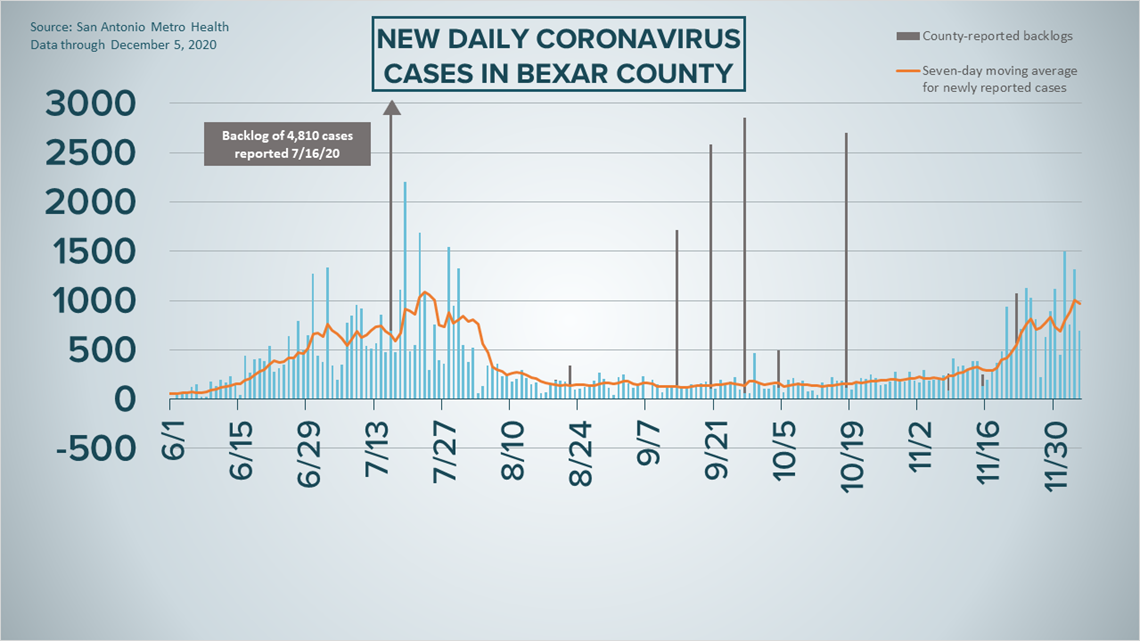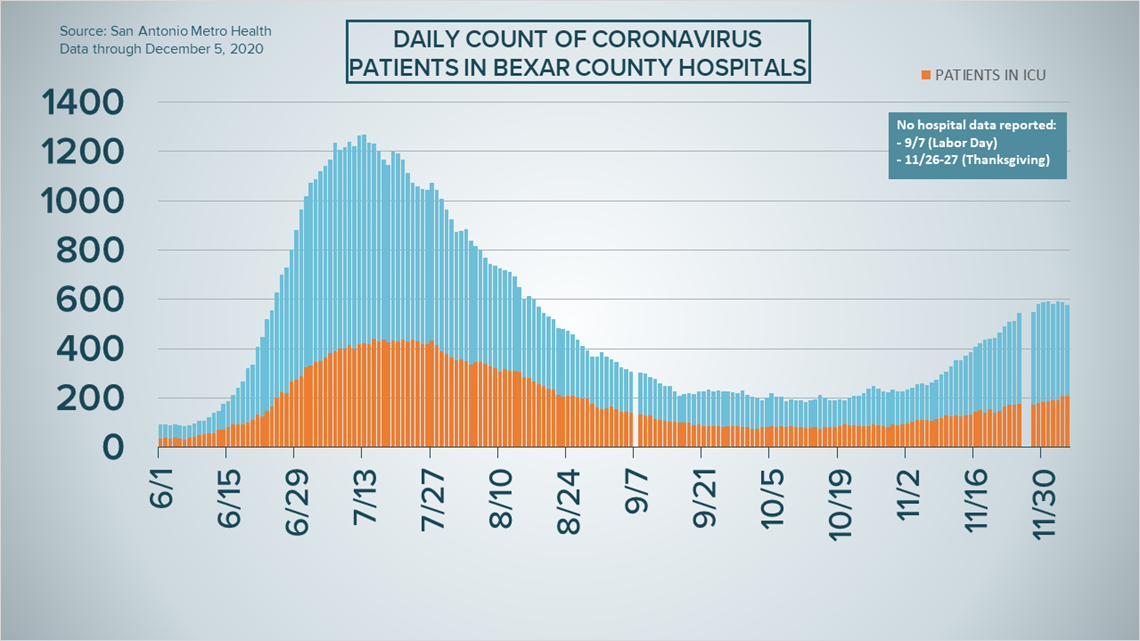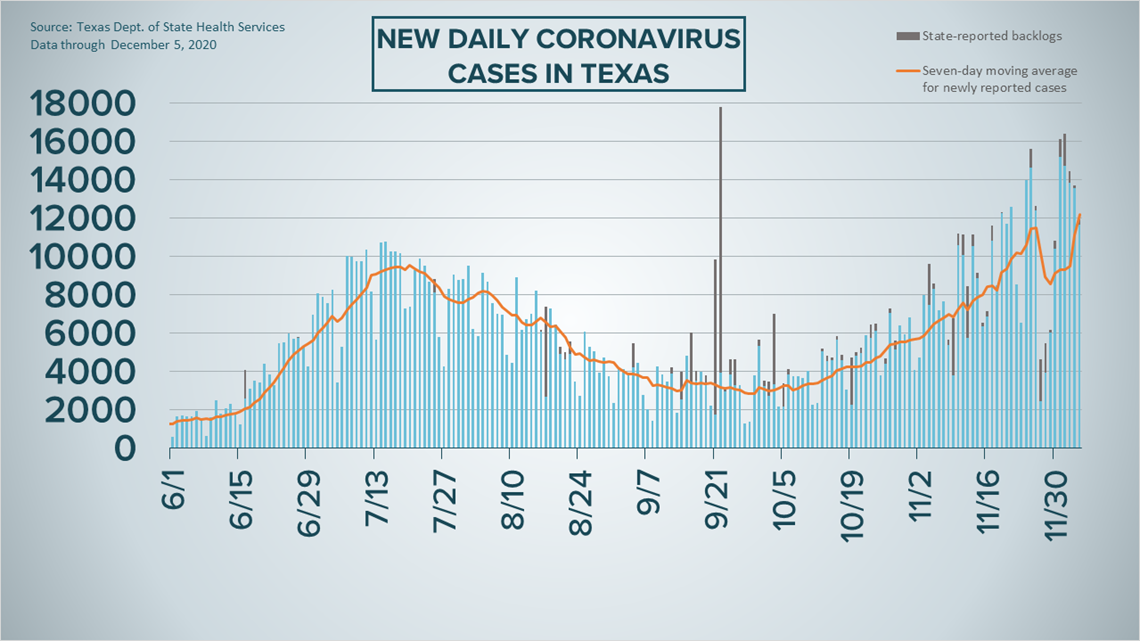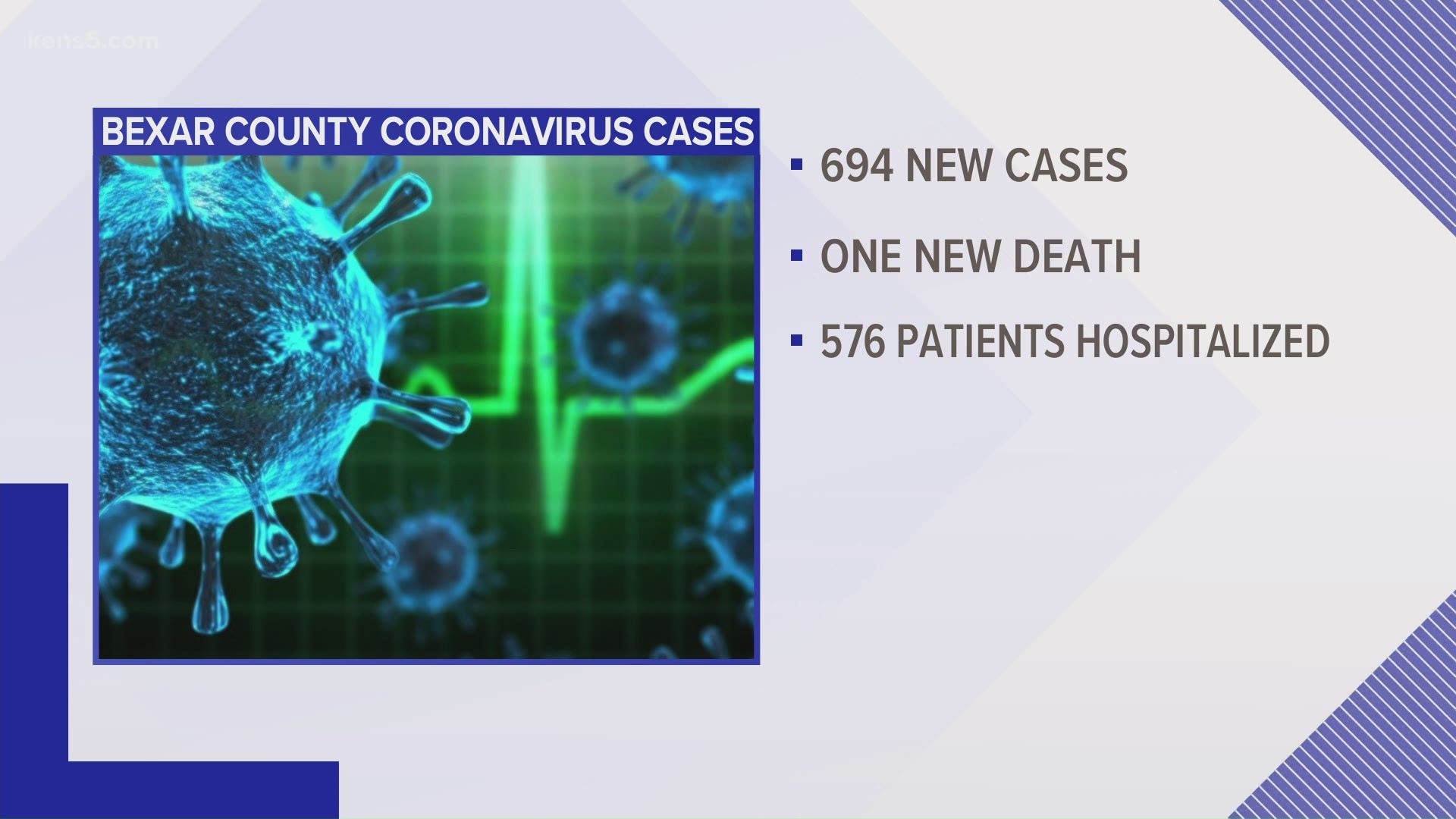SAN ANTONIO — We're tracking the latest numbers from the coronavirus pandemic in San Antonio and across Texas. Here are the latest numbers reported by Bexar and surrounding counties:
- Bexar County: 694 new cases were reported on Saturday, bringing the total number of cases to 85,895. One new death was also reported, raising the death toll to 1,377.
- Hays County: Officials in Hays County on Friday reported 82 new cases in the county and one additional COVID-related fatality. As of Friday, there are a total of 7,644 lab-confirmed local cases (785 of which are active), while the death toll rose to 106. 6,753 residents have recovered from the virus.
- Comal County: Comal County reported an additional 146 coronavirus cases – 112 are confirmed, and 34 are probable – on Friday, bringing its total to 4,932. No new death from COVID-19 complications was reported by local officials, so the local death toll remains at 131. The county estimates 568 active cases on Friday.
More county case information is available through the Texas Department of Health Services COVID-19 dashboard.
How Bexar County is trending
We've tracked how many coronavirus cases have been confirmed in Bexar County from the time officials began reporting cases in March 2020. The graphic below shows the number of cases since June and charts those daily case numbers along a 7-day moving average to provide a more accurate picture of the overall coronavirus case curve in our area and the direction we're trending amid the pandemic.
On Saturday evening, Metro Health updated its online coronavirus-tracking dashboards to reflect an additional 694 cases in Bexar County, the lowest daily tally since 452 cases were reported Tuesday. Metro Health says 85,895 county residents have been diagnosed with COVID-19.
Meanwhile, local health authorities also reported one more virus-related death, raising the death toll for Bexar County to 1,377.


In a reflection of statewide developments, Metro Health reported lower hospitalizations numbers pertaining to the coronavirus for the second straight day. On Saturday, 576 were receiving treatment for their symptoms; that's 11 fewer than on Friday.
The number of patients in intensive care (208) is down one from Friday.


Coronavirus in Texas
The total number of novel coronavirus cases in the state since the pandemic began grew by 13,695 on Saturday, according to the Texas Department of State Health Services.
That total includes 11,672 new confirmed cases and 296 cases attributed to backlogs not previously reported in the state's total (more details can be found at the top of this page).
As of Saturday, more than 1.3 million Texans have been diagnosed with COVID-19. Of those, 1.24 million diagnoses are confirmed via molecular testing, while another 61,494 are positive antigen tests.


State health authorities also reported 247 additional virus-related deaths on Saturday—the third straight day of at least 244 deaths. At least 22,502 Texans have died from COVID-19 complications.
The number of COVID-19-related hospital patients, meanwhile, dropped for the second straight day, this time by 99 overall patients to 8,916. The last time the state was below 9,000 hospitalizations was Monday, but Texas is still contending with a large upwards trend of hospitalized patients that began in October.
Meanwhile, the state estimates that 1,022,297 Texans have recovered, while 199,209 Texans remain ill with COVID-19.
The latest update from the Texas Education Agency showed that there have been 65,552 cumulative cases among staff and students across the state through Nov. 29. That number comprises 40,985 positive student cases and 24,567 staff cases. More information can be found here.
The TEA releases new data on school cases every Thursday.
Latest Coronavirus Headlines
- Second $1,200 stimulus check 'may still be in play,' Biden says
- Moscow opens dozens of coronavirus vaccination centers
- UN health chief: World can start dreaming of pandemic's end
- Hill Country Santa mourned following coronavirus-related death
- CDC calls for 'universal face mask use' as coronavirus infections, deaths spike
- Pelosi optimistic, says momentum growing for COVID-19 relief bill
- Pediatricians call for kids to wear face masks during most youth sports
- Tokyo Olympics delay costs may reach $2.8 billion
Coronavirus symptoms
The symptoms of coronavirus can be similar to the flu or a bad cold. Symptoms include fever or chills, cough, shortness of breath or difficulty breathing, fatigue, muscle or body aches, headache, new loss of taste or smell sore throat, congestion or runny nose, nausea or vomiting and diarrhea, according to the Centers for Disease Control.
Most healthy people will have mild symptoms. A study of more than 72,000 patients by the Centers for Disease Control in China showed 80 percent of the cases there were mild.
But infections can cause pneumonia, severe acute respiratory syndrome, kidney failure, and even death, according to the World Health Organization. Older people with underlying health conditions are most at risk.
But infections can cause pneumonia, severe acute respiratory syndrome, kidney failure, and even death, according to the World Health Organization. Older people with underlying health conditions are most at risk.
Experts determined there was consistent evidence these conditions increase a person's risk, regardless of age:
- Chronic kidney disease
- COPD (chronic obstructive pulmonary disease)
- Obesity (BMI of 30 or higher)
- Immunocompromised state (weakened immune system) from solid organ transplant
- Serious heart conditions, such as heart failure, coronary artery disease, or cardiomyopathies
- Sickle cell disease
- Type 2 diabetes
The CDC believes symptoms may appear anywhere from two to 14 days after being exposed.
Human coronaviruses are usually spread...
- Between people who are in close contact with one another (within about 6 feet).
- Through respiratory droplets produced when an infected person coughs, sneezes or talks. These droplets can land in the mouths or noses of people who are nearby or possibly be inhaled into the lungs.
- Some recent studies have suggested that COVID-19 may be spread by people who are not showing symptoms.
Help stop the spread of coronavirus
- Stay home when you are sick.
- Eat and sleep separately from your family members
- Use different utensils and dishes
- Cover your cough or sneeze with your arm, not your hand.
- If you use a tissue, throw it in the trash.

